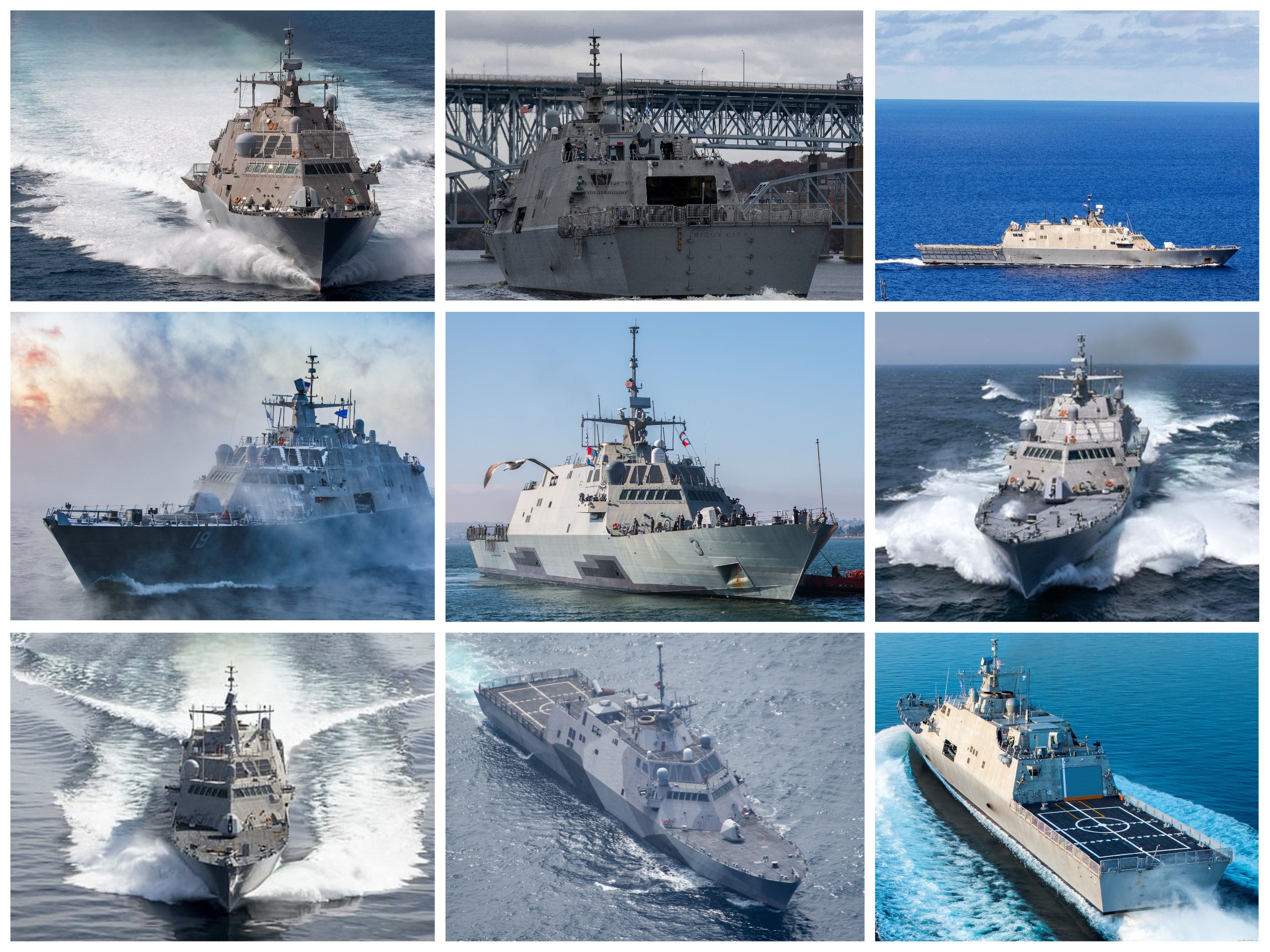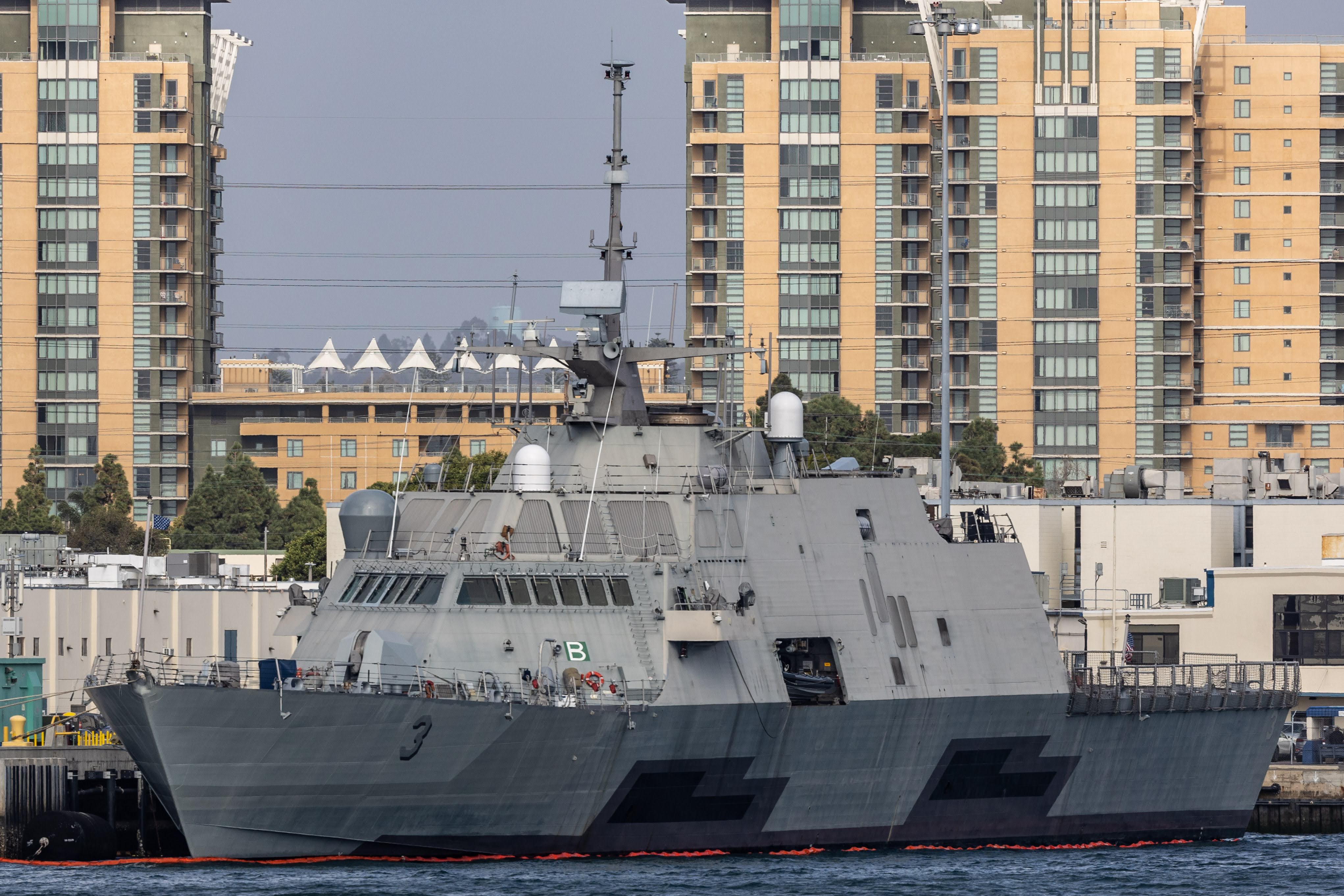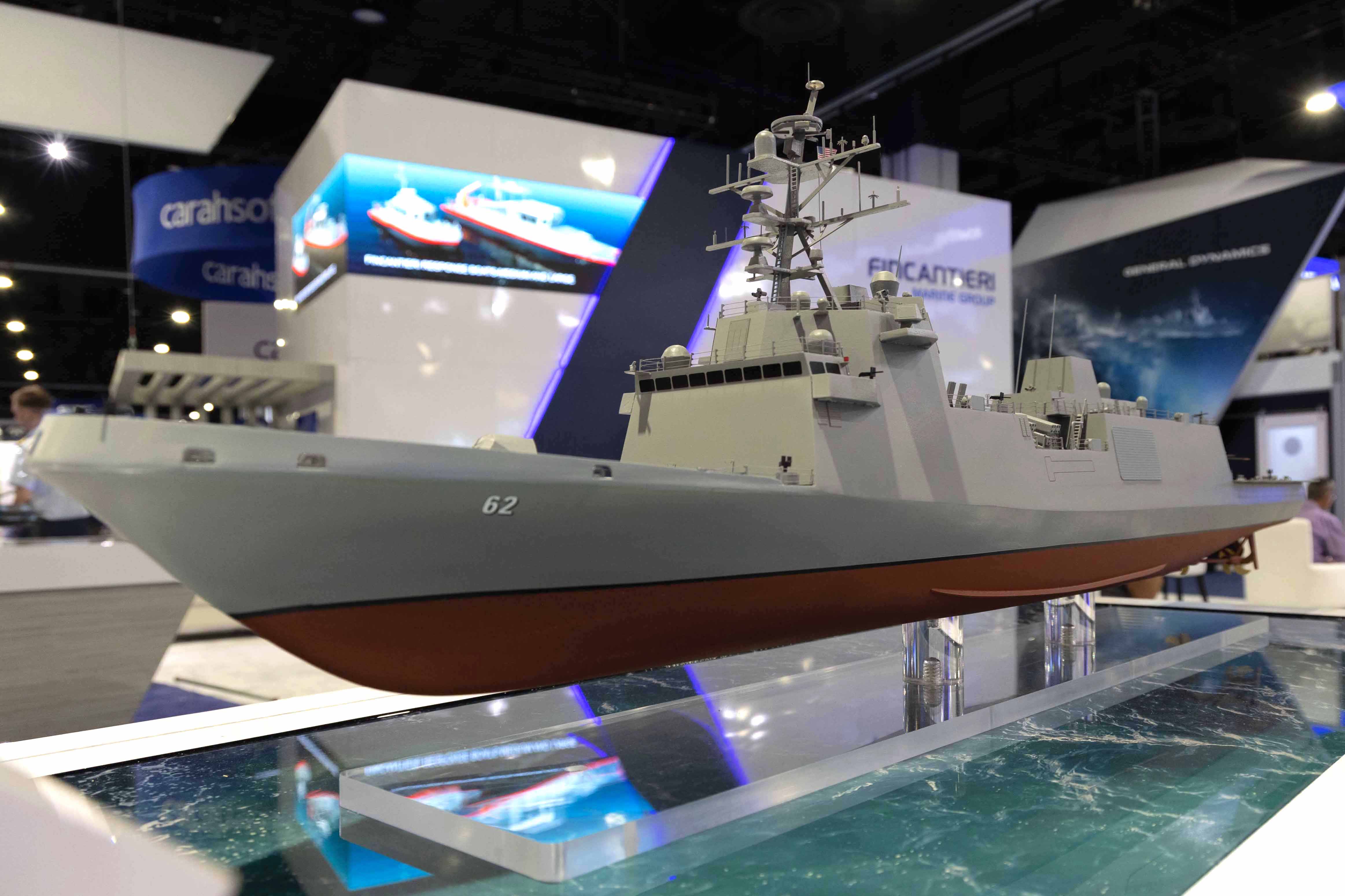
The Navy could transfer the Freedom-class Littoral Combat Ships it plans to decommission to other countries, Chief of Naval Operations Adm. Mike Gilday told lawmakers today.
Testifying before the Senate Appropriations Committee defense subcommittee, Gilday suggested the panel assess the possibility of transferring the ships to countries in South America, where the LCS could perform counter-drug operations.
“Now, in terms of what are the options going forward with these ships, I would offer to the subcommittee that we should consider offering these ships to other countries that would be able to use them effectively. There are countries in the southern, in South America, as an example as you pointed out, that would be able to use these ships that have small crews. And so instead of just considering scrapping as the single option, I think there are others that we can look at, sir,” Gilday told Sen. Jerry Moran (R-Kan.).
Other countries have received U.S. Navy ships once they’ve left service. For example, the U.S. Navy transferred multiple Oliver Hazard Perry-class frigates to other nations, including Turkey, Bahrain, Poland and Pakistan.
The Navy is seeking to decommission nine Freedom-class LCSs as part of its Fiscal Year 2023 budget proposal, but the plan has received criticism from lawmakers, as none of the ships have reached their expected service lives.
Gilday on Thursday argued to Congress that the Navy wants to decommission the ships because they would not fare well in a potential conflict against China, which Pentagon officials describe as the “pacing threat” for the military.
“Unfortunately the Littoral Combat Ships that we have, while the mechanical issues were a factor, a bigger factor was the lack of sufficient warfighting capability against a peer competitor in China. A key factor in the determination was the anti-submarine warfare package that was being developed for the Freedom-class hull that just were ineffective. And so we refused to put an additional dollar against that system that wouldn’t match the Chinese undersea threat. That was a primary driver, sir, in leading us to determine that those ships relative to others, just didn’t bring the warfighting value to the fight,” Gilday said.
The Freedom-class LCSs have recently experienced two major issues: a class-wide problem with the combining gear that marries the ship’s gas turbines to the diesel engines and difficulty fielding the intended anti-submarine warfare package for the LCS mission module program.

When unveiling its FY 2023 budget request in March, the Navy announced it would scrap the ASW package for the LCS mission module program after struggling to field the Raytheon AN/SQS-62 variable depth sonar (VDS) on the Freedom-class hull. Abandoning the ASW package recently triggered a Nunn-McCurdy breach for the LCS mission module program.
Instead, the Navy is planning for the Constellation-class frigate program (FFG-62) to host the service’s main anti-submarine warfare capability, which will feature the Thales’ CAPTAS-4.
Gilday during Thursday’s hearing said the Navy has other assets – like the destroyers and P-8A Poseidon aircraft – that can perform the ASW mission in the interim.
“The new class of frigate that we’re building will bring an enhanced anti-submarine warfare capability. The destroyers that we have right now have very capable anti-submarine warfare capabilities,” he said. “In terms of anti-submarine warfare, we do have other capable systems in the fleet, not just on the sea, but also I mentioned the submarines– the quietest summaries in the world – the most effective submarines in the world that we’re fielding as well as our P-8 aircraft for large-area ASW surveillance.”
Fincantieri Marinette Marine, which is building the Constellation-class frigates, has started early work but has yet to lay the keel for the lead ship – the official start of a ship’s fabrication.
When the Navy issued the initial contract to Fincantieri to build the first frigate, it included the option for nine more ships, but also retained the possibility of awarding contracts to a second yard for ships after the first ten. Fincantieri invested $180 million in its yard before receiving the initial frigate award and said ahead of the award that it would invest another $80 to $100 million if it won the competition so the yard could build two frigates per year for the Navy, USNI News previously reported.

During Thursday’s hearing, Sen. Tammy Baldwin (D-Wis.) said she’s looking to appropriate more money to develop the industrial base for the frigate program. Baldwin’s state is home to Fincantieri’s Wisconsin shipyard. Baldwin said she would support the Navy buying three or four frigates per year, but acknowledged this would likely demand that the service bring in a second yard.
Navy Secretary Carlos Del Toro told Baldwin he believes the Navy must get through building the first ship in the class to work out any initial problems before ramping up for a second yard.
“I would be all in favor of adding a second shipyard at the right moment in time, but I think before we make that decision it’s very important to ensure that the technologies that we put on the frigate and our investment of this committee for example to the LBES, or the land-based engineering support structure in Philadelphia, is critically important to the success of that ship,” Del Toro said. “And so we have to make sure that ship stays on schedule, on cost, on time and those investments should come first before we actually consider a second shipyard for that.”
The Navy’s top civilian said it’s “likely the case” that buying two ships per year would not warrant a second yard.
According to the Navy’s FY 2023 five-year budget plan, the service wants to buy one frigate in FY 2023, two in FY 2024, one in FY 2025, two in FY 2026 and one in FY 2027.
Congress voiced concern about the Navy bringing in a second yard too soon in the joint explanatory statement accompanying the FY 2022 appropriations bill.
“There is concern that prematurely adding a second CCF shipyard before the first shipyard has identified and corrected technical and production issues will inject unneeded risk and complexity into the program,” the statement reads.
Due to the risk concerns, lawmakers mandated that before issuing a contract to a second yard, the service must “prioritize the following objectives: technology maturation and risk reduction for critical shipboard components; major systems integration; full ship technical data package creation; and successful operationally realistic testing for the first ship,” according to text of the statement.
Navy budget chief Rear Adm. John Gumbleton said during the March budget rollout that the five-year budget plan for the frigate was reflective of what one shipyard could build.





